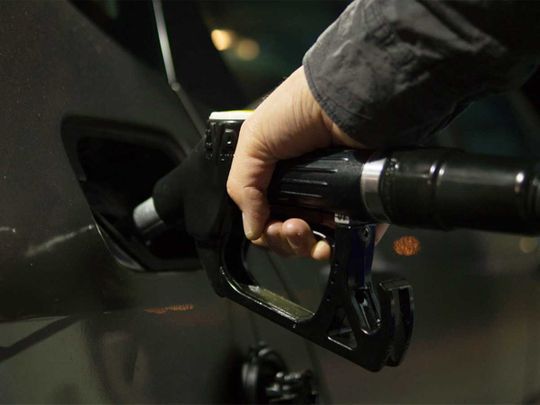
Turns out that overturning the Obama administration’s fuel-economy rules isn’t as easy as it seems.
Honda Motor Co., Ford Motor Co., Volkswagen AG and BMW AG struck an agreement with the state of California last week that will push through tighter fuel-economy regulations than those proposed at a national level by the Trump administration.
Other major automakers are likely to follow that lead.
Since states representing the most profitable third of the US car market tend to follow California’s standards, that’s a significant blow to Washington’s attempt to roll back stringent Obama-era rules.
Carmakers aren’t doing this out of the goodness of their hearts.
The original rules would push the average passenger car sold in 2025 to achieve around 55 miles per gallon. That’s roughly the level of a latest-model Toyota Prius Prime plug-in hybrid running off its gasoline engine.
Achieving those sorts of improvements is challenging. Indeed, the deal with California will marginally wind back the state’s original fuel-economy target while handing out more electric-vehicle credits.
So why didn’t the auto industry simply throw in its lot with the Trump administration’s maximally lenient approach?
Global picture
The answer comes from looking at the global picture, where shifts among the biggest car markets make divergent standards a problem.
Two decades ago, US rules could more or less define the shape of the world’s car market. America accounted for about two out of five new cars sold globally, and the European Union, with its tougher rules, was an outlier.
That picture has been changing for a while. Japan has gradually moved from having fuel-economy rules close to US standards to ones rather more ambitious than Europe’s.
Canada has been moving in the same direction too, and India — which had only rudimentary fuel economy policies in 1999 — now uses Europe as a model.
Even China is sharply upgrading its ambitions to reduce the toll of vehicle pollution on its cities by 2025.
Tough rules around the share of new-energy vehicles in carmakers’ fleets were put in place this year, and electric-car sales will top 2 million next year.
Against that backdrop, the Environmental Protection Agency’s proposed rule would make US states that don’t abide by California standards the odd ones out globally.
Consistency on rules
For decades, carmakers have been trying to minimise the complexity of their global supply chains by having unified platforms and modular designs that can allow most of their output to follow a similar pattern, rather than developing bespoke vehicles for each market.
So while companies generally like lenient regulation, they also want rules to be moving in a consistent direction.
Consider metal-bashing.
One of the main ways carmakers have worked to improve fuel economy has been to use aluminium instead of steel for the panels and parts that make up so much of a car’s mass.
Yet because aluminium sells for about three times as much as steel, it’s not a cost-free move.
Lightweight material
When the entire automotive industry is adopting lighter-weight metal, the increase in costs won’t worsen your competitive position.
But if your rivals are taking advantage of lax regulations and sticking with cheap, heavy steel instead, you’re in trouble.
That explains why the oil lobby and the auto lobby have been on different pages around this issue.
For oil producers and refiners, weaker fuel-economy standards are an unambiguous win, promising higher sales to a key market.
For carmakers, they’re a mixed blessing at best, and probably an absolute negative.
Several decades ago, a concerted push from Washington could feasibly have switched global auto emissions onto a more carbon-intensive path.
These days, America just isn’t a significant enough part of the world car market. As major investors in research and development, it’s little surprise that carmakers are relatively open to tougher regulation.
A laissez-faire global auto market is one where any upstart can muscle its way in, but the current standards represent a competitive moat that will ensure only the fittest manufacturers can survive.
Despite the Trump administration’s attempt to grab hold of the industry’s steering wheel, its destination is already fixed.
— Bloomberg








